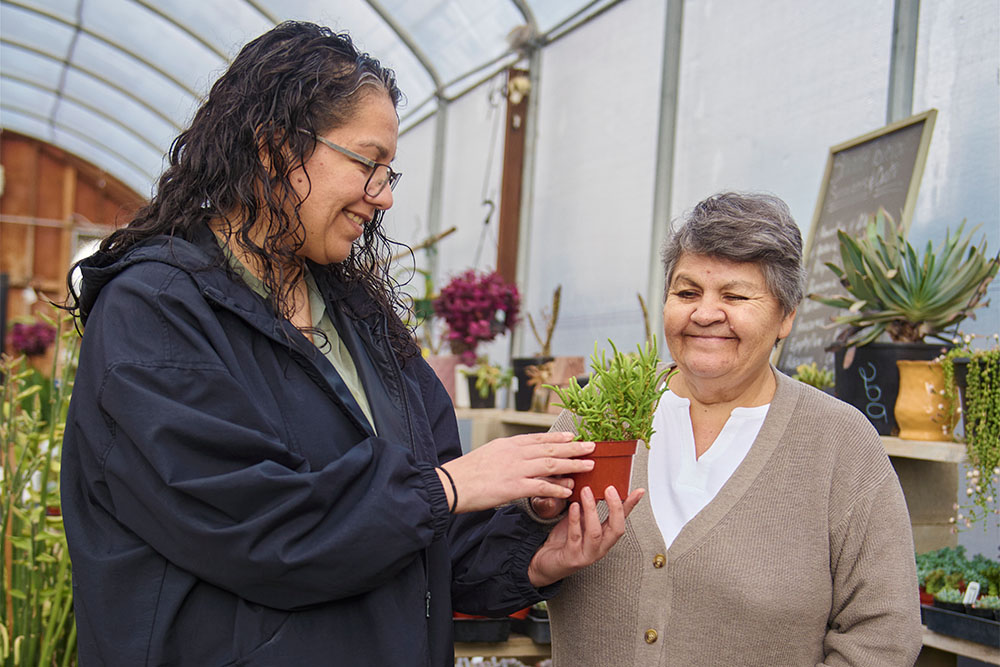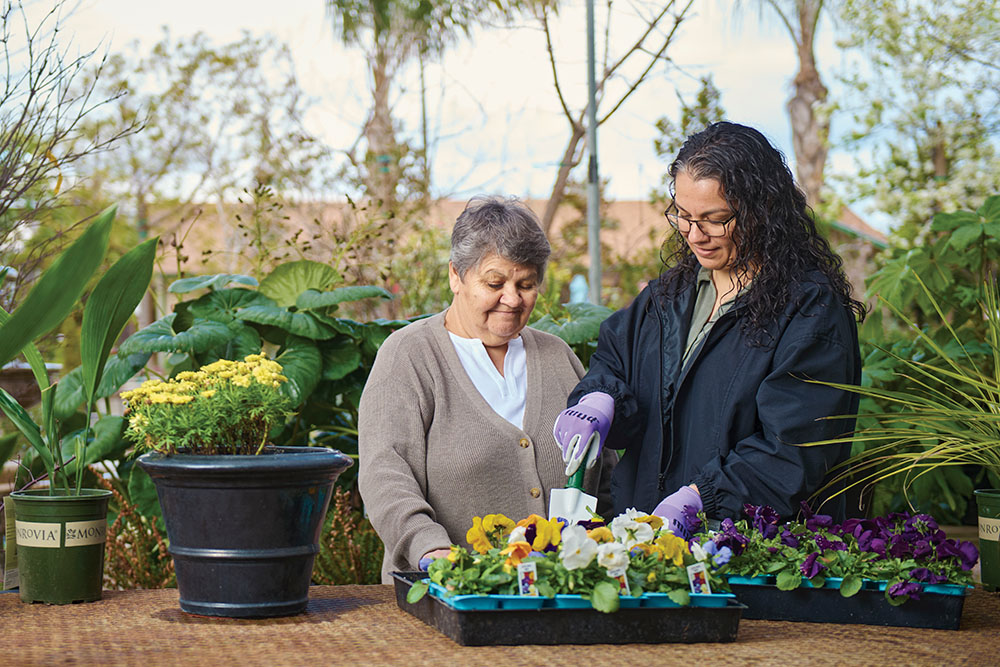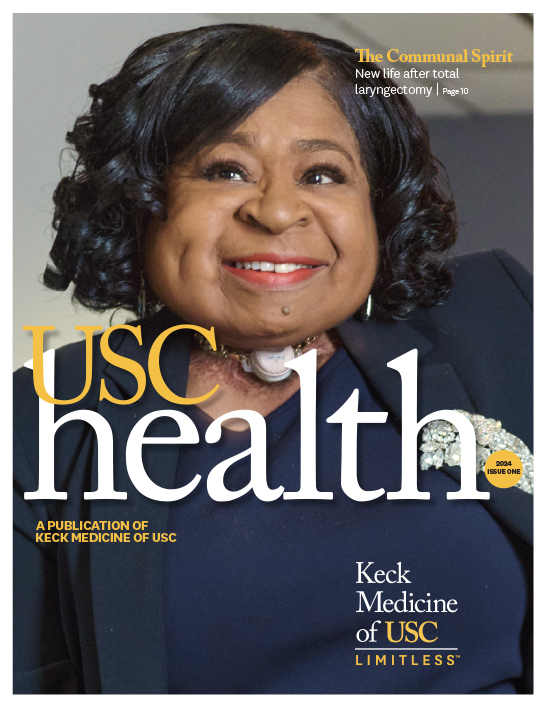
When Felicitas and Margarita Gonzales unexpectedly needed brain surgery eight days apart, Gabriel Zada, MD, earned the thanks of their whole family.
Neurosurgeon Gabriel Zada, MD, entered the operating room at Keck Hospital of USC on June 22, 2023, prepared to remove a noncancerous pituitary tumor from his 64-year-old patient, Felicitas Gonzales.
An expert in brain, skull base and pituitary tumor surgery, Dr. Zada had performed such a procedure many times before.
He knew Felicitas’s daughters, Margarita, 37, and Betsy, 27, and other relatives were waiting to hear the outcome. What he couldn’t know was he would be performing a different brain surgery on Margarita only eight days later.
The unusual occurrence marked the first time Dr. Zada, director of the USC Brain Tumor Center, part of Keck Medicine of USC, has operated on two such close relatives. It brought him the thanks of a whole family.
“From what we can tell, their cases are completely unrelated,” Dr. Zada says. “Their conditions had no genetic link as far as we know, and they had much different diagnoses.”
What are symptoms of a pituitary tumor?
Felicitas first knew something was wrong when she fell three times in two days — first in her garden and twice in her bedroom in the McFarland, California, home where she lives with her daughters.
When Margarita and Betsy found her after the last fall, she was disoriented and, like with the earlier falls, couldn’t explain it.
The sisters drove their mother from McFarland in Kern County to a hospital in Bakersfield, a half hour away. There, emergency room doctors suspected Felicitas might have had a brain tumor and referred her to the USC Brain Tumor Center.
Dr. Zada quickly confirmed Felicitas had a pituitary tumor, measuring just under three centimeters (about the size of a grape) and located at the base of the skull. The cause of these noncancerous tumors remains unknown, but surgical treatments have become highly effective.
On surgery day, Dr. Zada didn’t need to make a single incision on the patient’s skin. Instead, he inserted an endoscope — a tiny tube with a camera at the end — through Felicitas’s nasal cavity to access and remove the tumor located within millimeters of her optic nerves.
Worried, Betsy stayed at Keck Medical Center of USC to watch over their mother’s care. “When you hear the word ‘tumor,’ you think the worst,” Betsy says.
Margarita traveled back and forth. She had begun experiencing severe headaches, nausea and sensitivity to noise. “I couldn’t even laugh without my head hurting,” she says. “I thought it was stress.”

How to treat arachnoid cyst in the brain
Increasingly concerned, Margarita visited an urgent care near their home. A physician there diagnosed migraines and prescribed a medication that made her feel worse.
She returned to the Bakersfield emergency room, where doctors again suspected a brain tumor. Betsy and their brother, Frank, joined forces to help get Margarita transferred to the USC Brain Tumor Center as quickly as possible.
For the Gonzales family, having a second family member face brain surgery within such a short time span multiplied their anxiety.
When Margarita broke the news to her mother, who was recovering from her own operation, Felicitas cried. Margarita reassured her, “Don’t worry. Dr. Zada and his team are going to take care of me.”
Everyone on Dr. Zada’s team did such a wonderful job for both of us. I’m so grateful.
Margarita Gonzales, patient, USC Brain Tumor Center
“Undergoing a neurosurgical operation can be one of the most frightening and life-changing experiences a person will ever have,” Dr. Zada says. “I was very privileged and honored they entrusted me with both of their lives.”
His exam revealed Margarita’s issue: an arachnoid cyst, a sac filled with spinal fluid at the back of her brain, measuring four centimeters (about golf-ball size) and causing significant pressure on her cerebellum and brainstem.
Although diagnosed later, Margarita’s case was more rapidly progressing and urgent than her mother’s, with the cyst elevating the pressure inside her brain and already causing double vision.
In the operating room, Dr. Zada made a small incision in the back of Margarita’s head, then threaded in an endoscope to essentially “pop” the cyst and allow its fluid to drain, alleviating the pressure it was causing.
Brain surgery recovery
According to Dr. Zada, the USC Brain Tumor Center is optimally qualified to take on among the most complex neurosurgical challenges. In addition to its expertise in minimally invasive surgical techniques, “we have a great multidisciplinary team, all dedicated to brain tumors,” he says.
In another plus, Keck Medicine is home to one of the few National Institutes of Health-funded research centers for pituitary tumors.
Felicitas recovered quickly. Afterward, she says, “I felt like a 15-year-old again.”
Since the surgery, her blood pressure and blood sugar readings have gone down. She has returned to tending her plants and making her family-favorite albondigas soup.
Margarita had a more challenging recovery. For the first week, she experienced headaches and dizziness and used a walker, but soon improved.
She is back at work at Pandol Bros., Inc., a San Joaquin Valley produce grower and distributor, where her sister Betsy also works.
“Everyone on Dr. Zada’s team did such a wonderful job for both of us,” Margarita says. “I’m so grateful.”
Interested in supporting the work of Keck Medicine? Visit this page.
Topics


